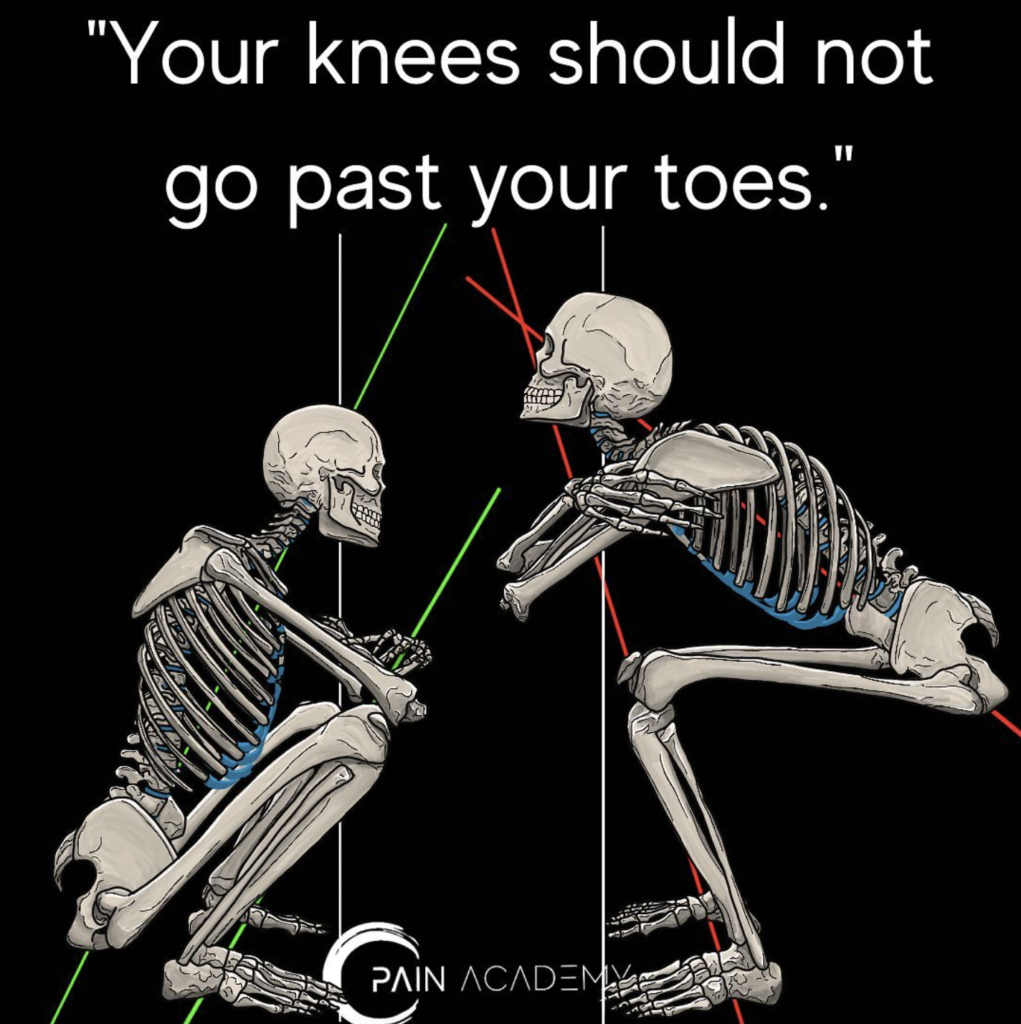
I heard this cue a lot when I first got into the world of Corrective Exercise. It made sense with my little experience working with people and showed up in many of the curriculums coming from accredited programs – so I thought it was the right thing to teach.
This cue can be directly traced back to a study done 48 years ago that looked at how unrestricted knee movement, meaning the knees moving forward of the toes when squatting – increased knee pressure by 28%. [1]
That study wasn’t misleading or wrong, it was just incomplete. Unfortunately, incomplete was good enough for many people (myself included) and so began the narrative “If your knees move past your toes, it’s bad for you and you’ll damage your knees.”
In 2003, University of Memphis research again confirmed that knee stress increased 28% when the knees moved past the toes in a squat. [2]
However, the 2003 study also looked at what happened in the hips and lower back when knee was not allowed to move past the toes when squatting.
The 2003 study found hip torque increased nearly 1,000% when the knee was restricted and not allowed to move past the toes during a squat.
Said differently – to reduce 28% of stress on the knee, the torque placed on the hip increased nearly 1,000%.
In 2013, a study was done to see how restricting the knees affected the stress and movement of the spine. [3] The subjects in this study showed significantly more bending in the spine and stress of the muscles surrounding the spine when the knee was restricted. The subjects who squatted without any knee restriction had less movement and stress in the back.
By not restricting the knee, the upper body can remain more upright when squatting which reduces stress on the back and torque in the hip.
Barring extreme trauma and injury to the knee, allowing the knees to move over the toes can be quite beneficial in improving and restoring natural real-world dynamic movement and function.
[1] McLaughlin, T., Lardner, T., & Dillman, C. (1978, May). Kinetics of the parallel squat. Research Quarterly, 49(2), 175-189.
[2] Fry AC, Smith JC, Schilling BK. Effect of knee position on hip and knee torques during the barbell squat. J Strength Cond Res. 2003 Nov;17(4):629-33.
[3] List R, Gülay T, Stoop M, Lorenzetti S. Kinematics of the trunk and the lower extremities during restricted and unrestricted squats. J Strength Cond Res. 2013 Jun;27(6):1529-38.